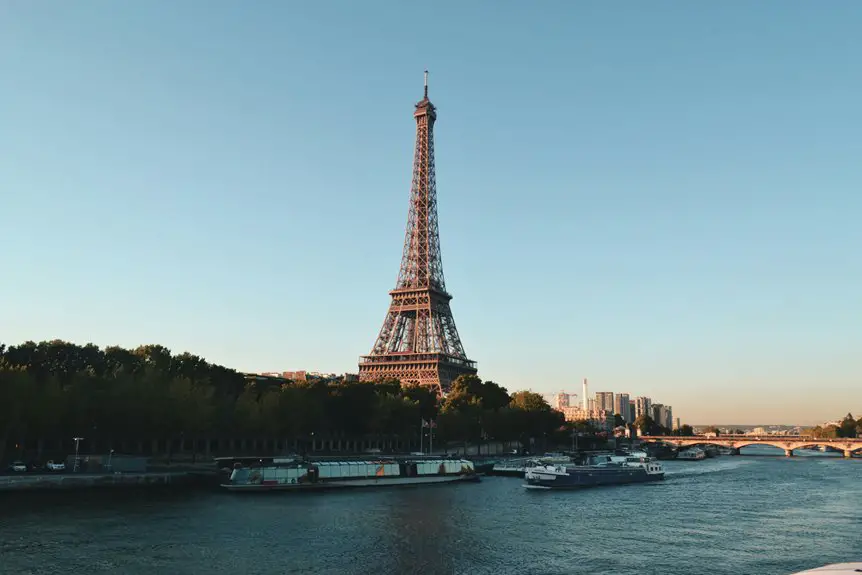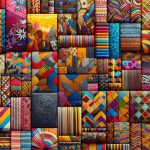You call the Tour de France “Le Grand Boucle,” meaning “The Great Loop,” because it traces a massive circuit around France that challenges every cyclist’s endurance, speed, and climbing skills. The route includes flat plains, tough mountains, and unpredictable weather, making strategy essential. This nickname captures the race’s rich history and cultural pride in France while inspiring cycling fans worldwide. If you want to understand the full story behind this iconic name, there’s plenty more to explore.
Table of Contents
Key Takeaways
- “Le Grand Boucle” means “The Great Loop,” reflecting the Tour’s large circuit around France.
- The nickname highlights the race’s challenging, continuous loop through diverse French landscapes.
- It symbolizes the physical and strategic demands of completing the entire Tour route.
- The name carries deep cultural pride and tradition within France, connecting generations.
- Globally, “Le Grand Boucle” unites fans by emphasizing the Tour’s rich heritage and iconic status.
Origins of the Tour De France’s Route
The Tour de France‘s route began with just one goal: to challenge riders across France’s diverse landscapes.
You can imagine the organizers wanting to create a race that tested every aspect of a cyclist’s ability. They designed the route to include flat plains, rolling hills, and tough mountain climbs. This variety pushed riders to demonstrate endurance, speed, and climbing skills.
Each stage was carefully planned to showcase different regions, allowing spectators to experience France’s geography and culture. As a competitor, you’d face unpredictable weather and terrain, making strategy vital.
The route wasn’t just about distance; it was about the challenge and spectacle. This thoughtful design helped the Tour become the iconic race it’s today, demanding both physical and mental strength.
Meaning and Translation of “Le Grand Boucle”
Understanding “Le Grand Boucle” gives you insight into the deep cultural significance behind the Tour de France‘s nickname.
Translated literally, “Le Grand Boucle” means “The Great Loop” or “The Big Loop.” This name captures the essence of the race, as it traditionally forms a large circuit around France, starting and ending in different cities but always covering a vast loop through the country’s diverse landscapes.
When you hear “Le Grand Boucle,” you’re reminded of the race’s continuous path, looping through mountains, plains, and coastlines. The phrase emphasizes both the physical shape of the route and the challenging nature of completing the entire circuit.
The Evolution of the Tour’s Course Design
Although the Tour de France started with a relatively simple route, its course design has evolved dramatically over the years to challenge riders and captivate audiences.
You’ll notice how organizers continually tweak the route to test endurance, speed, and strategy.
Here’s how the course has transformed:
- Introduction of Mountain Stages: Adding the Alps and Pyrenees made climbs a key element, pushing riders’ limits and shaping race outcomes.
- Incorporation of Time Trials: Individual and team time trials test pacing and teamwork, adding another tactical layer.
- Route Variability: The course changes yearly, featuring different regions and terrains, keeping the race unpredictable and engaging.
Cultural Significance of the Nickname in France
Nicknames carry a powerful cultural weight in France, especially when it comes to the Tour de France. When you hear “Le Grand Boucle,” you’re tapping into more than just a nickname—it’s a symbol of national pride and tradition.
This name highlights the race’s demanding loop around France’s diverse landscapes, reflecting the country’s geography and spirit. You’ll find that locals use it with a sense of affection and respect, connecting generations through shared excitement and anticipation.
By embracing this nickname, you’re also recognizing the Tour’s role as a cultural event that unites communities, from small villages to big cities.
How “Le Grand Boucle” Has Influenced Cycling Fans Worldwide
When you hear “Le Grand Boucle,” you’re not just connecting with French culture—you’re tapping into a global cycling phenomenon. This nickname has inspired fans worldwide to embrace the sport’s rich traditions and fierce competition.
Here’s how it influences you and other cycling enthusiasts:
- Shared Passion: Le Grand Boucle unites diverse fans who enthusiastically follow each stage, creating a worldwide community centered on admiration and excitement.
- Cultural Appreciation: You gain insight into French heritage and geography, deepening your connection to the race beyond just the competition.
- Inspiration to Ride: The challenge and prestige of Le Grand Boucle motivate you to engage in cycling, whether casually or competitively, fueling dreams of your own grand loops.
This nickname makes you part of a story that transcends borders.
Frequently Asked Questions
Who Founded the Tour De France?
You’d find that Henri Desgrange, a French cyclist and journalist, founded the Tour de France in 1903. He wanted to boost his newspaper’s sales by creating a thrilling, challenging cycling race across France.
How Long Is the Tour De France on Average?
The Tour de France stretches about 3,500 kilometers, like a thrilling novel you can’t put down. You’ll ride roughly three weeks, facing daily challenges that test your endurance and spirit, pushing you to your limits.
What Is the Most Challenging Stage of the Tour?
You’ll find the most challenging stage often involves the high mountain climbs in the Alps or Pyrenees, like Alpe d’Huez. These grueling ascents test your endurance, strength, and mental toughness in the Tour de France.
How Are Tour De France Winners Determined?
You determine Tour de France winners by their overall time; the cyclist with the lowest cumulative time across all stages wins. You also have points and mountain classifications, but the yellow jersey goes to the fastest rider overall.
Have There Been Any Female Participants in the Tour?
You won’t find female participants in the traditional Tour de France, as it’s been a men’s race. However, there’s a separate women’s event called Tour de France Femmes, showcasing top female cyclists annually.
- Why Are Percale Sheets So Expensive? An Analysis of Cost - July 15, 2025
- What Percentage of Cotton Is Percale? A Clarification - July 15, 2025
- What Type of Fabric Is Percale? A Textile Deep Dive - July 15, 2025







